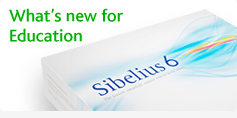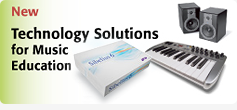Educating with Sibelius
Wisconsin Music Students Get Creative with Sibelius and Compass Software
Teacher DeWayne Roberson Breaks New Ground with “Soundscapes” Music Technology Class
The town of Watertown, Wisconsin looks over the banks of the Rock River, and at Watertown High School, instrumental teacher DeWayne Roberson looks over the shoulders of students in the computer lab as they find new ways to explore music using the Sibelius notation and composition software programs.
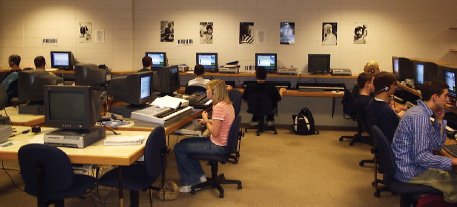 |
Watertown High School tech lab |
Budding artists throughout the Watertown High music program can be found using Sibelius in ways you might expect: the choir director uses it to create accompaniment CDs for individual vocal practice and independent study students use it for composition and arranging. But it’s in the school’s innovative one-semester music and technology class, “Soundscapes,” that the software really comes to life.
“It includes students who may never have done anything with music, as well as students who are extremely talented and advanced in music,” Roberson says. “My overall goal is to explore music through the use of the technology, but music comes first. As we learn about a musical concept, I’m using the Sibelius features to highlight it.”
“One project that we do is we watch the video Stomp Out Loud by the troupe Stomp—the routines that include the garbage cans and all that,” he says. “We use that to tie into a ‘Physics of Sound’ unit that I teach. We go into the Sibelius Compass program and we learn about Arch Shape form. We have the kids think about what they saw, and write an essay that discusses which routine Stomp did in the video that encompasses Arch Shape form. Then we go to the Compass “Tracker” sequencer and the students build and mix sounds that best describe what they think is an Arch Shaped form that’s similar to what Stomp does. It’s really open to creativity. There are not a lot of restrictions.”
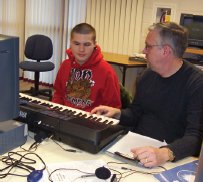 |
Senior Jarrett Zwieg with |
The class typically includes 32 to 36 kids per semester, working on the 18 PCs in the school’s computer lab. The music program adopted Sibelius in 2002. Another project in the Soundscapes class combines the use of Sibelius 3 with the easy-to-use sequencer in Compass to study the hit single “Don’t Know Why” by Norah Jones.
“We basically re-write, note for note, concept for concept, “Don’t Know Why” right into Sibelius right as the sheetmusic shows,” Roberson explains. “It’s just for practice in using all the techniques that Sibelius has for notation and data entry: the goal is to make your document look like the original sheet music. Once we get that established, we export the MIDI file to Compass Tracker and open that file. The student adds a drum part using the rhythm styles that he or she feels best matches the original. Then we use the Edit: Filter window to highlight the bass notes of the piano part, and use that to create a bass guitar line. Now we have a piano, drum track and bass guitar part. And once we have that, I say, ‘Now, get creative. How would you like to hear that song?’ Change your drums and your bass, whatever you need to do, to make that song play in the style you really like. The results are just a blast. I’ll get everything from punk to polka.”
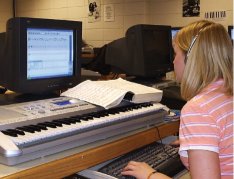 Sophomore Kaitryn Thoma |
In other projects, Roberson’s students will use Sibelius to write soundtracks for feature film trailers, or learn to manipulate the music of Bach.
“We just finished a project with our youngest band involving the Civil War,” he notes. “Part of that had the students writing out different Civil War-related songs in various keys. We used the Sibelius lab for kids to do that on their free time.”
“Sibelius is a very strong program to use for music notation, but it’s also very easy to teach,” he concludes. “The kids are able to pick it up very quickly. I’ve created a whole new series of projects with it, and I try to be as creative as I can to keep these kids interested in music.”

